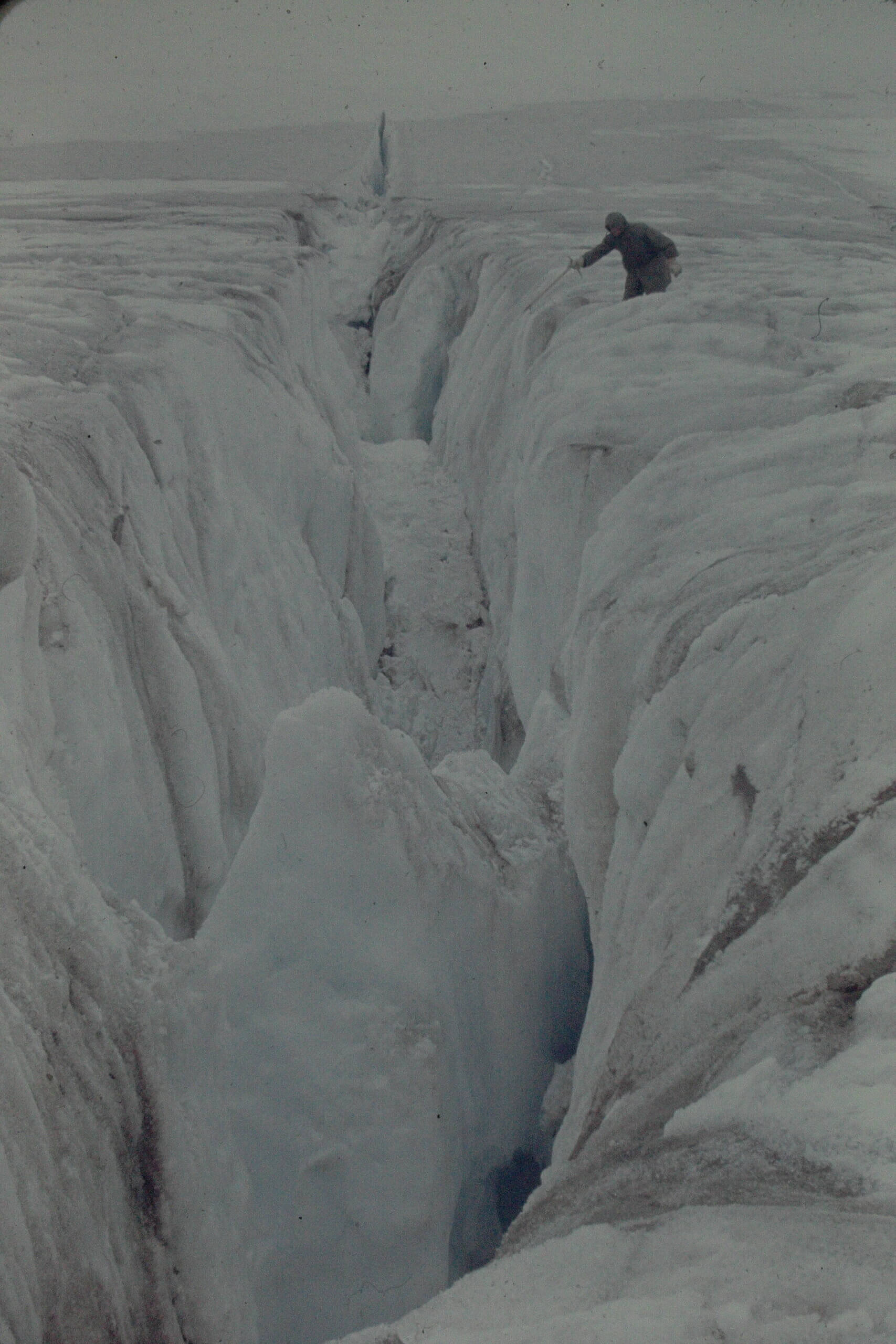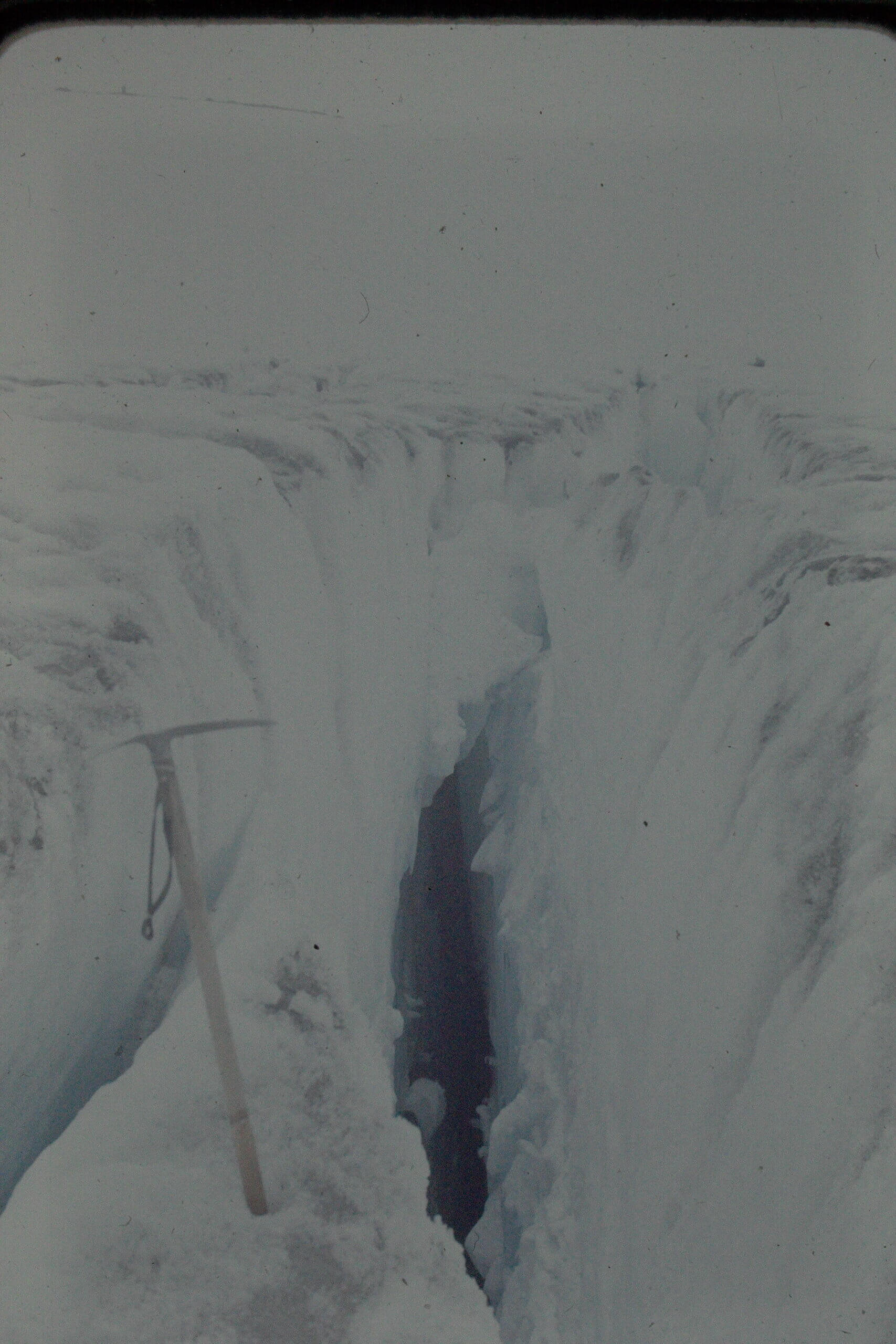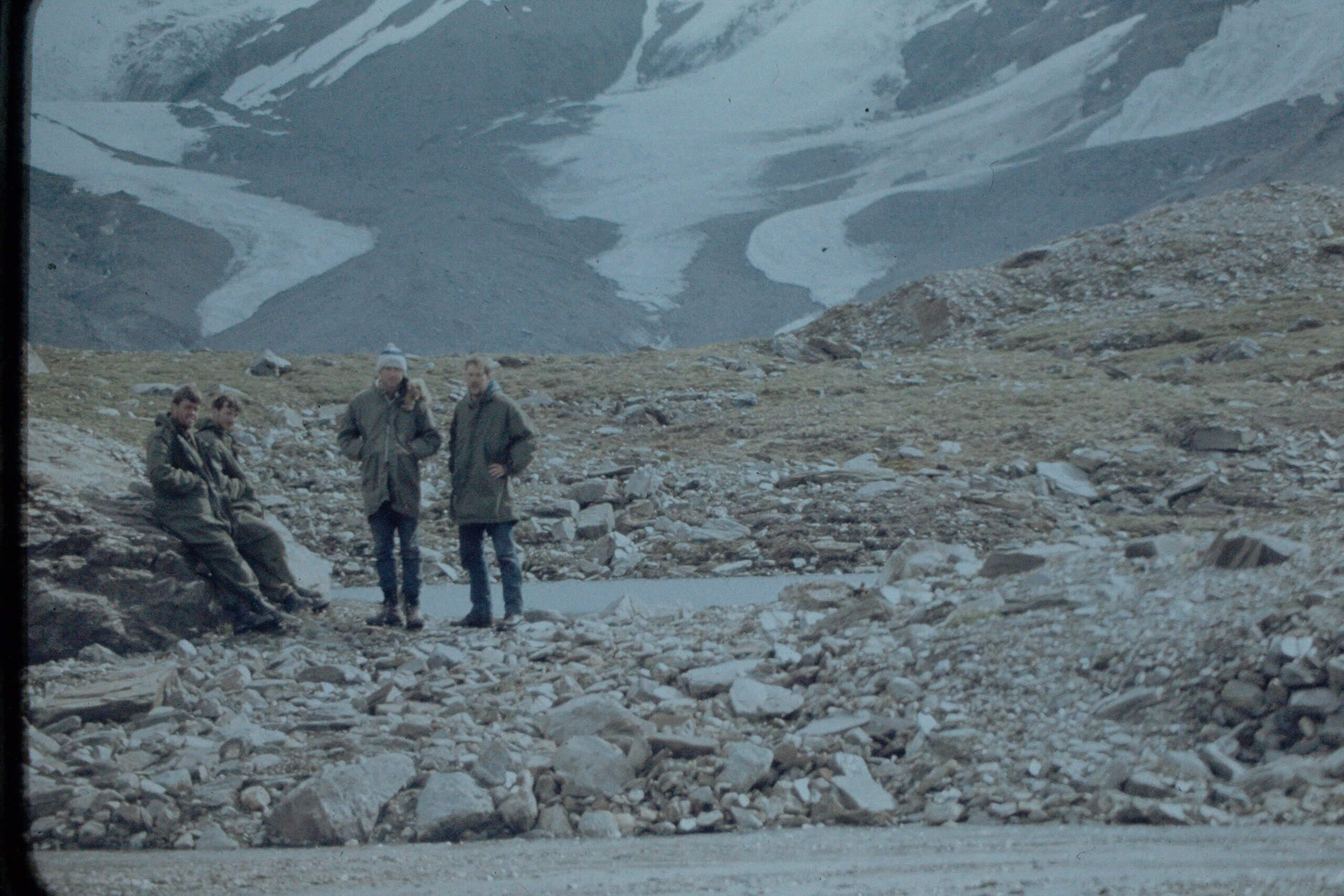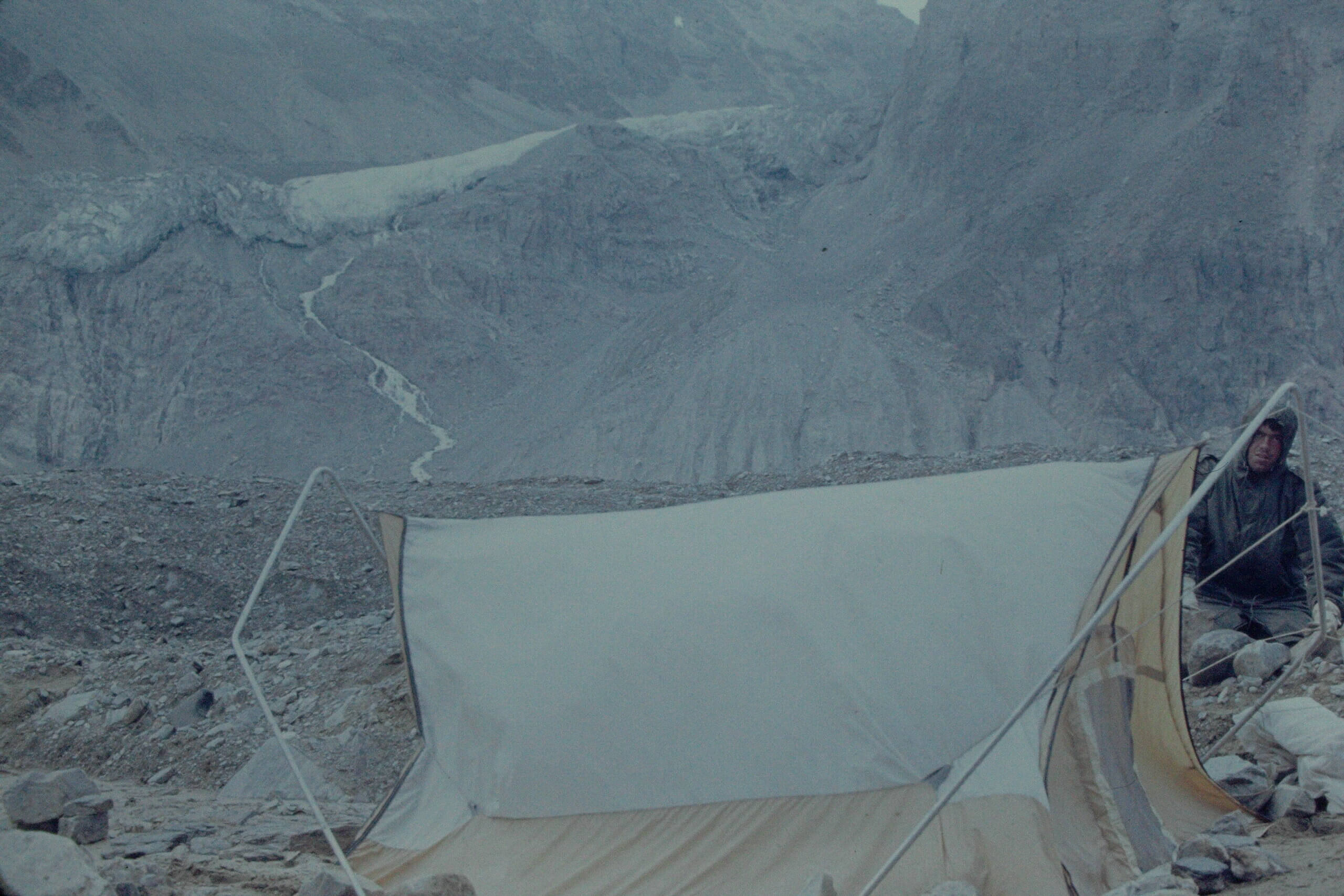Gerstle Glacier Trip – Day 4
Through the icefall.
This day was one of our more dangerous because of dealing with crevasses, moulins, and an icefall. The crevasses were now larger and some were concealed by snow in parts. Most of the time we could walk around them or jump over the smaller ones. Ice bridges that crossed over a crevasse still had to be considered dangerous, as they might collapse as you crossed.
We also saw our first moulins. That was new to all of us. These holes in the ice are caused by melt water that streams over the ice and then plunges into a hole (the moulin). Unlike a crevasse that closes off from ice pressure at a depth of 150 feet, water from a moulin plunges to the base of the glacier, which may be hundreds of feet. If you fell into a crevasse, the remaining party might be able to rescue you. If you fell into a moulin, you would drop hundreds of feet and break bones, drown or succumb to hypothermia; your body would be lost for decades if not centuries. Moulins kind of freaked me out.
We also had to make it up an icefall – an icefall is where the glacier meets resistant rock and tumbles over it like a water fall, creating seracs (ice towers) and many intersecting crevasses. We had to finally put on our crampons (shoe spikes) and use a rope to wind our way through. One section was steep enough that I cut steps in the ice with an ice axe. Luckily by traveling up the west side of the glacier we could avoid the much more dangerous east side of the icefall.
At the end of the day, we had to climb up and out of the glacier bed but found a nice flat spot for camp 4 (altitude ~ 5700 feet) with a nice view of hanging glaciers across the valley to the east. Since we climbed above the valley, we were well above the glacier. We only made 5 miles that day.
I did not get shots of the icefall that day but I got photos of the east side of the icefall on day 6.





